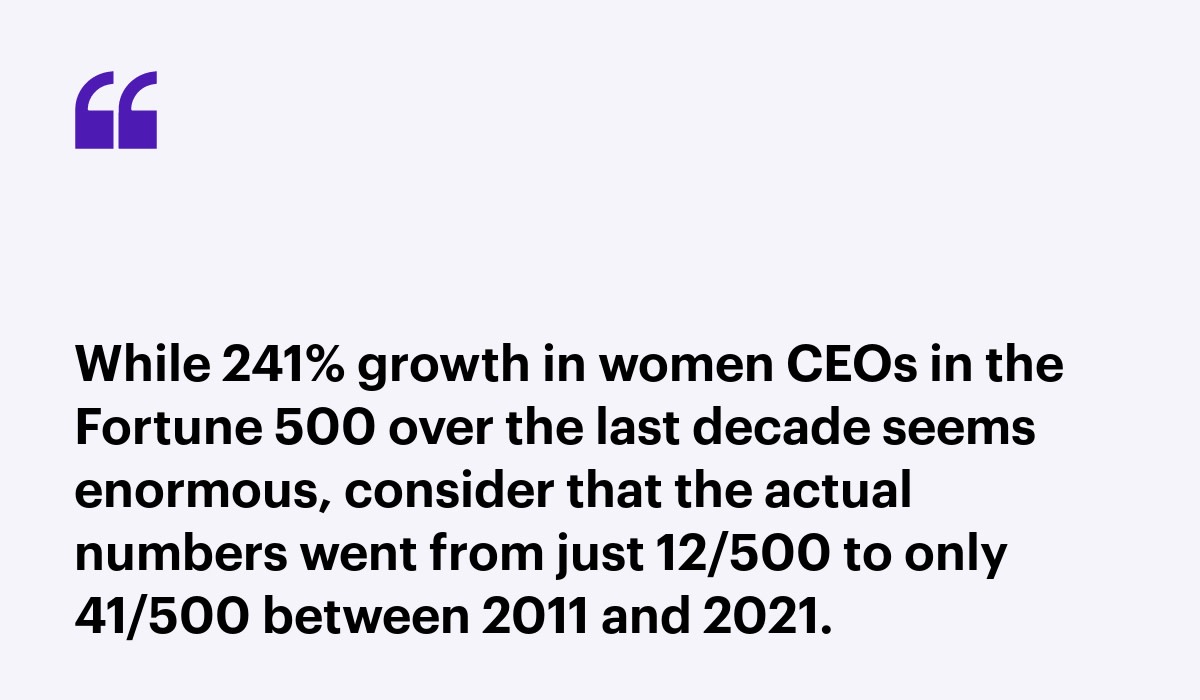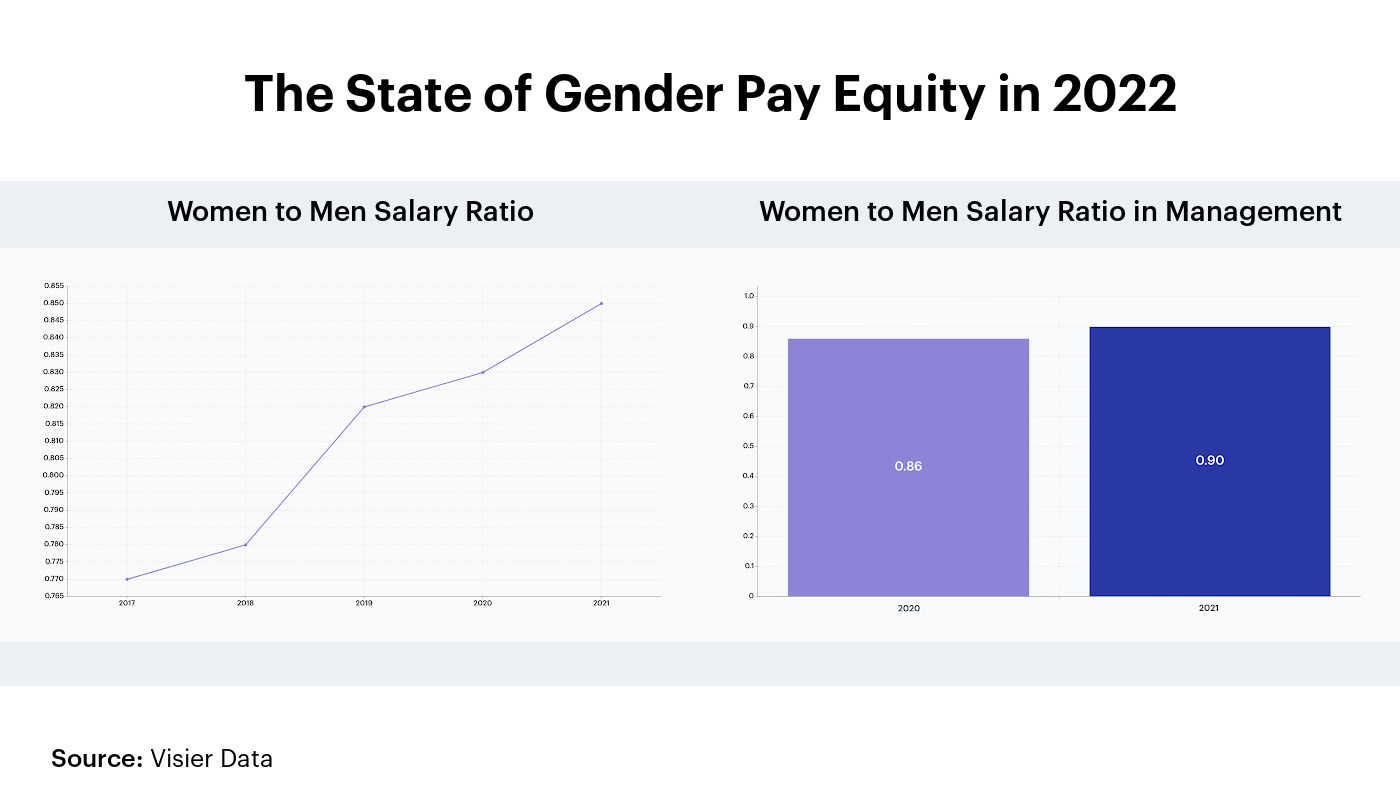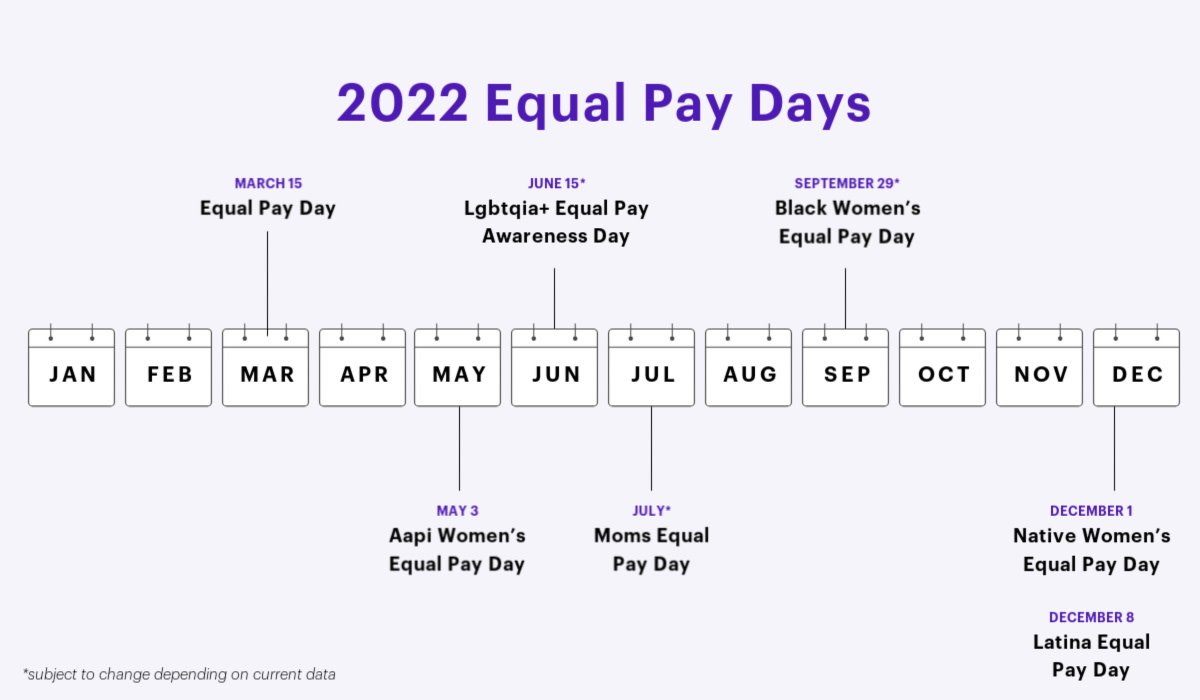The Gender Wage Gap 2022 is Narrowing, Slower for Women of Color
Equal Pay Day represents how far into the next year women must work to earn the equivalent of what a man earns. What's the gap for 2022 and is there progress?

You would think that in 2022 women and men are now paid the same wages for doing the same work—after all, the amount of women CEOs at Fortune 500 companies has increased 241% in the last decade and U.S. women soccer players are now paid the same as men—but you’d be wrong. While the gender pay gap has narrowed, it continues to persist—and especially for women of color.
In 1963, the Equal Pay Act was passed in the United States in order “To prohibit discrimination on account of sex in the payment of wages by employers engaged in commerce or in the production of goods for commerce.” Nearly 50 years later the labor market for men is more lucrative than it is for women—that works out to about 85 cents on the dollar for women’s pay vs. men’s.
To reach gender pay equity will require more years, weeks, and days of incremental change at every level of society and of business. While 241% growth in women CEOs in the Fortune 500 over the last decade may seem enormous, consider that the actual numbers of women went from just 12/500 to only 41/500 between 2011 and 2021.

Women CEOs in the Fortune 500
What is Equal Pay Day?
Started in 1996 by the National Committee on Pay Equity, Equal Pay Day is an internationally-observed day that differs by country, and by demographic. The date represents how far into the next year a specific group of women must work to earn the equivalent of what a man earns. For instance, in the U.S. a woman must continue working another three-and-a-half months into the next year in order to earn the same as a man earned in one year. This year, that date is March 15, 2022.

The gap is closing and, according to Visier’s own research, tapping into our database of over 12-million anonymized employee records, we found signs of progress.
Overall, the gender pay gap continued to reduce in 2021, with average pay for women increasing by two cents, to 85 cents for every dollar paid to men. Since 2017, the gender pay gap has closed eight cents, or from $0.77 in 2017 to $0.85 in 2021. If this rate of change continues at the same pace, pay equity could be achieved in about 7.5 years, narrowly beating the goal set by the Equal Pay International Coalition (EPIC) of pay equity by 2030.

This is from an update to Visier’s 2021 Gender Pay Gap report where we also learned that women in managerial roles earned 90 cents on the dollar compared to their male counterparts—closing the gap quicker than in non-managerial roles—but still paid 10% less than men.

The gaping pay gap for women of color
It’s important that when we talk about progress, we talk about what that progress looks like for all types of women. The gap grows enormously wider when broken down into demographic-specific groups such as women of color, mothers, and those from the LGBTQIA+ community. In the US, the time it takes for different demographics of women to achieve the same pay as white men for the year prior is represented by the date their equal pay day falls on the calendar:

Source: equalpaytoday.org
As you can see in the graph, in 2022 it takes the average of all women until March 15th to earn what white men did by the end of the previous year. But if you look at women’s pay by demographic, it takes Black women until September 29th, Native Women until December 1st, and Latina Women until December 8th—almost a full year longer.
Progress, but not there yet
While the gender pay gap is narrowing, there is still so much work that needs to be done, especially in regards to women of color. While days commemorated on the calendar are important for visibility, action always needs to follow suit. So today let’s honor how far we’ve come and celebrate the women who’ve helped us get there, but let us also hire women, promote women, and pay women. It’s the only way forward.
“Fight for the things that you care about, but do it in a way that will lead others to join you.” – Ruth Bader Ginsburg


